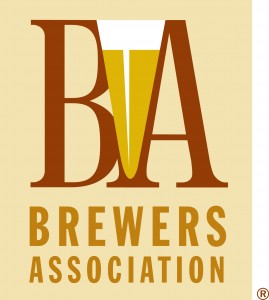
So how are distributors optimizing their books? To find out, the Brewers Association surveyed “several” beer distributors throughout the country and found, in part, that building success is a shared responsibility.
In the most recent edition of its quarterly distributor newsletter, ‘The BA Insider,’ the trade group examined best practices for SKU and portfolio management.
The BA found that, as wholesalers take on new clients, they’re increasingly looking for polished business plans which highlight a brewery’s commitment to investing behind the brand. Whether that commitment is driven by targeted social media campaigns or investing “in people, events, [point-of-sale], training, local marketing, national accounts, etc.,” distributors want to know how dedicated their new partners are to growing sales.
Additionally, distributors want to know about a company’s long-term vision. They’re asking brewers about their ability to expand, both locally and regionally, in order to meet demand. They also want to know about craft brewers’ aspirations and succession plans.
This topic of improving the relationships between distributors and craft brewers was explored at last December’s Brewbound Session in San Diego, Calif. Joe Cotroneo, the senior vice president of Crescent Crown Distributing in Arizona, emphasized the importance of having these kinds of conversations before inking any agreements.
“We need you guys to help us with where do you see your portfolio fitting, what trade channel, what specific retailers,” he said. “It is a supplier’s responsibility to understand how your brands fit into the distributor’s portfolio. You should have a pretty clear understanding of that, you should have discussions about that.”
Identifying and understanding the nuances of how to sell a growing avalanche of craft brands will help both brewers and distributors properly manage expectations — something the BA described as a key element of effective business planning.
“Distributors should regularly work with brewers to make sure each SKU is meeting expectations,” the BA wrote. “It is also incumbent upon brewers to manage their portfolio to ensure each SKU is beneficial to their distributor and local retailers.”
Cotroneo said that setting expectations comes from a distributor’s ability to examine the retail landscape and predict demand.
“That’s a duty of ours, to make sure we give you a decent forecast so you can plan your business better,” he said.
But no matter how well a brewery markets its beer, sometimes products just don’t sell. That’s why the BA suggests that distributors should evaluate slower-moving SKUs annually to ensure they are meeting expectations. If it’s more than a few SKUs, the BA — which advocates for small brewer carve-outs in state-by-state franchise reform — suggests that distributors allow smaller partners to break their contracts.
“The beer industry—and the craft segment particularly—has evolved over the past decade,” the organization wrote. “It is time to be honest that brewers that are not invested in their brands and business may not be great long-term partners. On the other hand, for a local or regional brewer, they may represent a tiny part of your business, but your market may be a significant part of their current or potential business. When your expectations no longer align, allow brewers to seek out alternatives to ensure the industry continues to evolve.”
Brian Murphy, director of sales and marketing at Massachusetts Beverage Alliance (MBA), said there are many reasons taken into account when deciding whether to drop a brand from a portfolio, but ultimately, he looks for longevity.
“I guess the long and short of it is [that] we decide on whether these brands are going to last,” he said.
The full article is available on the Brewers Association website.
